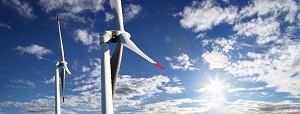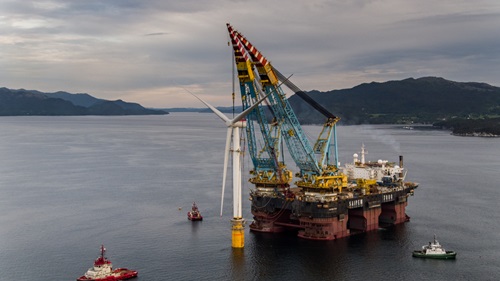- Energy Technologies
- Energy Technologies
- Offshore Wind Power
- Renewable Energy
- Renewable Energy
Floating Offshore Wind Showing Potential

Offshore wind is notching up impressive cost reduction success, evidenced by record low power purchase agreement prices in recent UK and other European competitive bidding auctions. This is great news, but the game changer is if floating offshore wind foundations could achieve commercial success.
This could reduce offshore wind foundation costs and open cost-effective wind power in locations coincident with large coastal population centers, energy demand, and deep ocean sea beds that currently aren’t cost-effective with today’s variety of fixed bottom foundations. Potential markets are the entire west coast of the Americas, Hawaii, Japan, South Korea, parts of China, South Africa, New Zealand, and many European markets, including much of the Mediterranean.
Floating Offshore Wind Becoming a Reality
With that context in mind, it’s great news to see that floating offshore wind is moving from the conceptual and design phase to actual projects. In 4Q 2017, Norway’s Statoil installed a 30 MW wind farm on the northeast coast of Scotland. It is made up of five 6 MW Siemens turbines installed on floating structures at Buchan Deep, 25 km off Peterhead, Scotland.
The Hywind Scotland wind farm is expected to power around 20,000 households. Statoil believes the project will demonstrate the feasibility of future commercial floating wind farms “that could be more than four times the size.” From the first pilot floating turbine outside Karmøy, Norway in 2009 to the launch of this new wind farm, capital costs have fallen by around 60%-70%. Statoil says cost reductions of a further 40%-50% are realistic for future projects.
Hywind Scotland Wind Farm

(Source: Statoil)
Hywind Scotland
The Hywind project will cover around 4 square kilometers at a sea depth of 95-120 meters. The floating turbines have a total height of 253 meters, with 175 meters of the structures floating above the surface of the sea (to the wingtip) and 78 meters submerged underwater. The rotor diameter is 154 meters. This is only the first step of the project, with the end goal being to develop a large-scale floating offshore wind project of 500 MW-1,000 MW. Statoil is a serious company with serious money backing its efforts, including the company agreeing in a competitive auction round in December 2016 to pay $42.4 million for lease rights to develop an offshore wind project off the New York coast.
Following France’s Example
The Hywind launch comes on the back of the inauguration of France’s first floating offshore wind turbine—Floatgen—in October and represents an important breakthrough for floating offshore wind. It shows it is ready to be integrated into the energy market. Floatgen’s 2 MW turbine features a number of innovative solutions, from the concrete composition and its construction to the nylon mooring lines.
The consortium developer Ideol has optimized some areas of the design and the construction method. It is building its supply chain in preparation for mass production, all with an eye to driving costs down. Ideol says its solution is ideal because it is compact and does not need to increase in size and mass at the same ratio as the turbine nameplate rating. Ideol says it can potentially be adapted to turbines up to 15 MW, the size range the leading turbine OEMs are planning for next-generation 2025-2030 offshore installations.
Offshore Wind Soon to Be a Legitimate Power Option
Floating offshore wind is not yet commercially viable against fixed bottom foundations. Plenty of fixed bottom locations are available, but these two projects show that commercial viability just around the corner. If the past decade has been any guide, with the costs of onshore wind falling 77% in the past 7 years, the wind market has been attacking challenges, costs, and other impediments and disproving doubters. Floating offshore wind is increasingly likely to prove its legitimacy as a cost-effective offshore wind option.